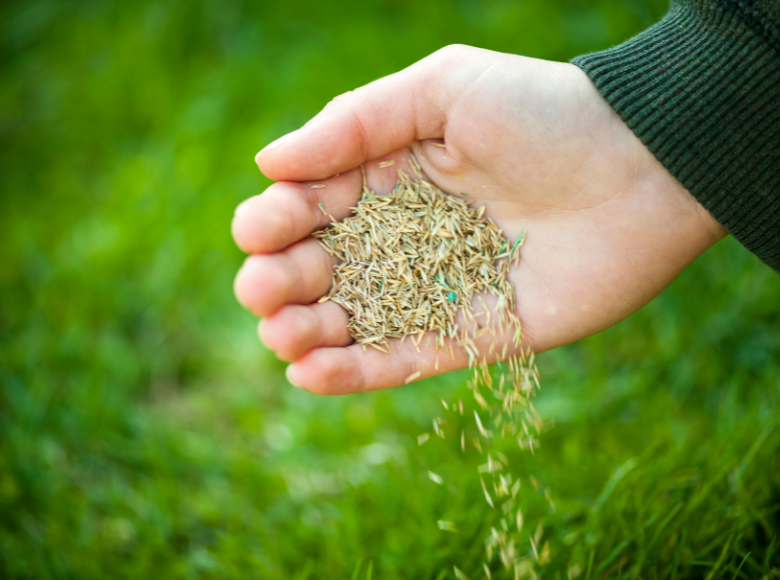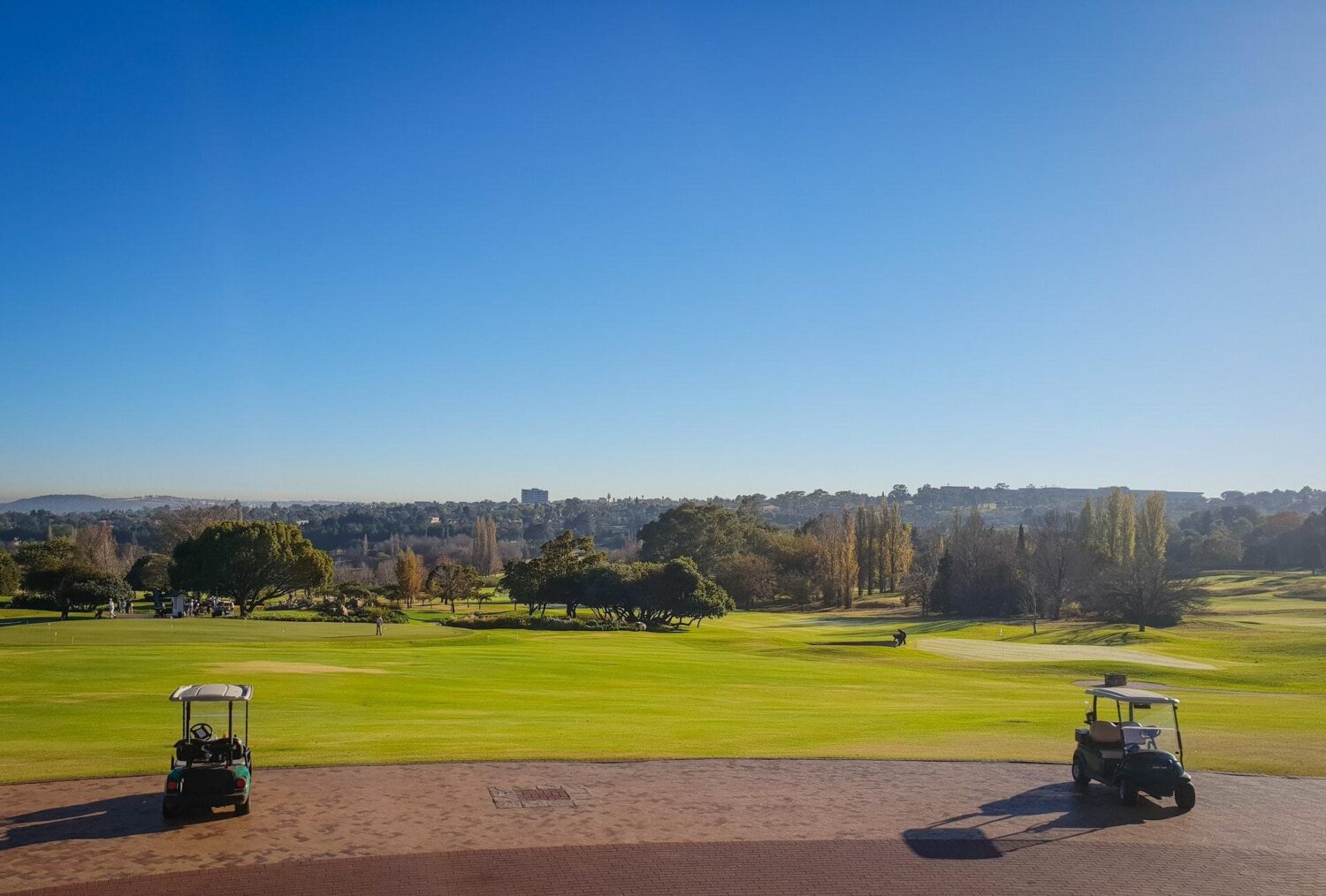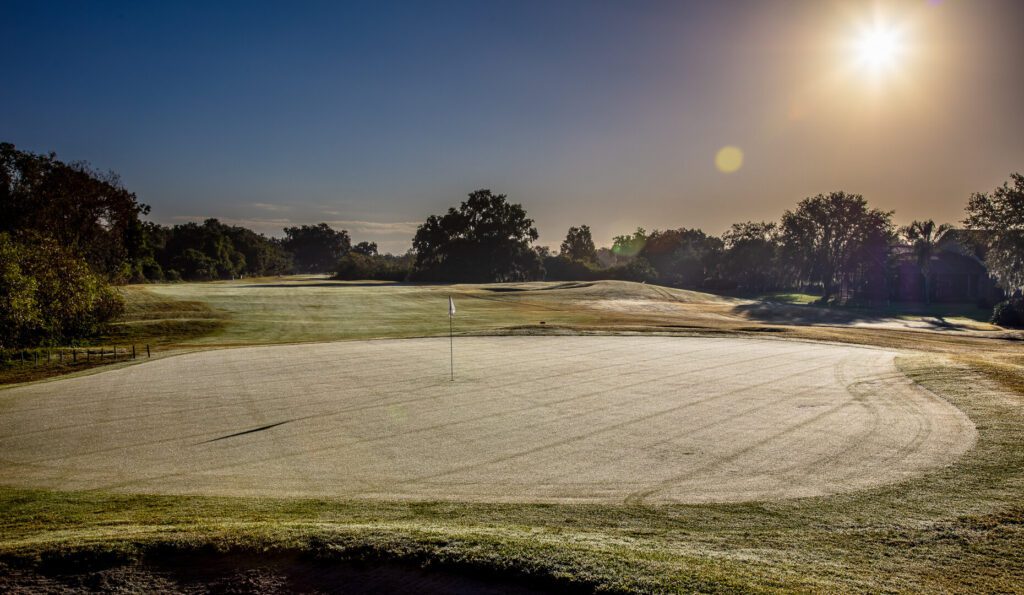When it comes to agronomics, there are a variety of processes that keep your golf course in the most optimal shape, while providing the very best playing conditions. Overseeding is a process on the golf course in which grass seed is spread onto existing turf. Overseeding, also known as topdressing, promotes new growth and can be used to swap out existing turf and or dormant turf. A typical example of overseeding is when Bermudagrass goes dormant and is swapped with Ryegrass.
Why Do Golf Courses Overseed?
Overseeding by hand
Overseeding is generally done to keep the course open year-round, as one grass type goes dormant the other enters a growing season allowing for turf to stay playable.
Technically you can play on brown or tan turf. However, for aesthetic reasons, golfers generally don’t like to play on brown fairways and greens even if they are perfectly playable.
There currently are no “miracle” varieties of grass that solve this problem. Using a turf type that stays green in the winter typically will struggle during high temperatures and summer droughts.
There are two solutions, overseeding and colorant application.
Overseeding will help maintain green aesthetics on a course. Ryegrass grows during the winter months and will improve conditions while the bermudagrass is dormant.
Best Practices
golf course maintenance and mowing
-
Overseeding typically requires the seed to be put down along with some sand, the sand along with the new grass growth can slow down or alter the play of greens for 7-10 days.
-
While overseeding, the best ways to minimize impact to play are by using temporary greens, hosting special events, or partially closing.
-
Ryegrass paired with Bermudagrass also helps keep the underlying soil dry and can reduce muddy conditions on the course. However, check the variety of ryegrass chosen as some versions of ryegrass can be toxic to Bermudagrass. This can slow the bounce-back of Bermudagrass fairways in the spring and summer.
-
When overseeding, allow for ten minutes of irrigation for every hour of overseeding time. Doing so helps to ensure germination.
-
While you can play on dormant Bermudagrass and other varieties because the grass growth is minimal damaged areas will not grow back. Continued play, cart activity, and divots can cause damage that will take significant time to heal in the growing season.
-
Reduce watering gradually a few weeks before overseeding. Generally, don’t stop watering until 2 or 3 days before overseeding. This helps with germination as the ground will retain some moisture.
-
Complete multiple cuts on the overseeded areas, the first cut should generally be double the final mow level.
-
Utilize plant growth regulator three or four days before overseeding to help the new seed take.
-
Avoid herbicides as there may be residual chemicals that could stunt the new seeds.
-
On the Bermudagrass, verticut the base, overseed, and then mow again, leaving a light layer of clippings on top of the newly spread seed.
Getting Maintenance Right
Anyone can read about overseeding, but not anyone can get it right. Hiring licensed and certified golf professionals are just as important as knowing yourself. Relying on the best possible staff, and having a support system for the future, means processes like overseeding and aeration don’t have to be a big deal anymore.
DTE Golf® is a golf facility partner that utilizes a network of resources and professionals to support and optimize your course conditions. Removing costs and responsibilities from you and your course, DTE Golf® can make the difference you’ve been looking for.





